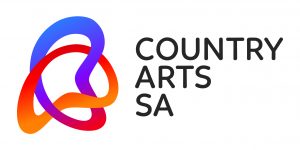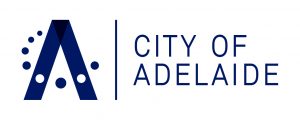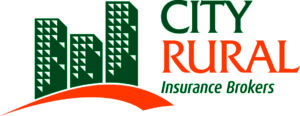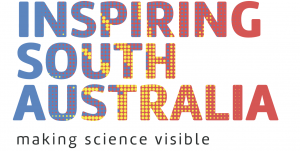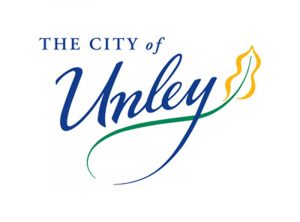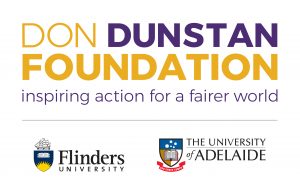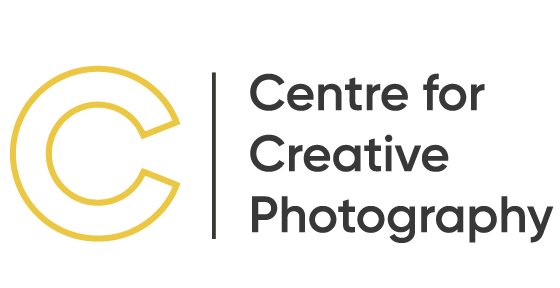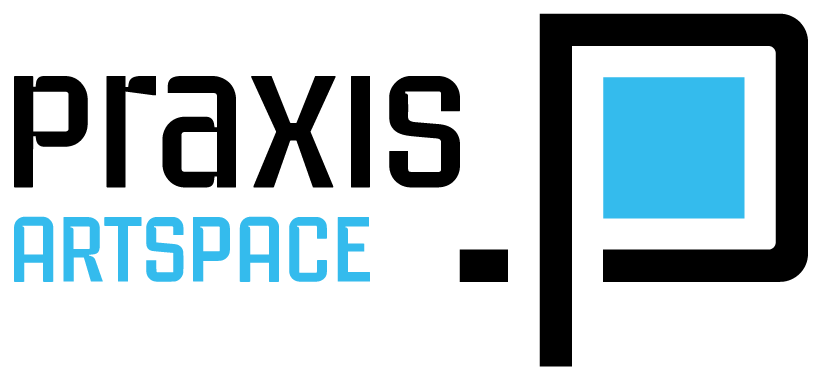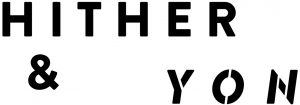SALA Awards & Opportunities
Find current and upcoming awards and opportunities here. Some are open to South Australian artists, and some are exclusive to artists & venues that are registered for the 2024 SALA Festival.
Check out the finalists and winners for the 2023 SALA Awards on our Finalists & Winners page, or check out our archive of winners from past years.
Guildhouse Artist's Choice Award
Artists of any medium, age, or skill level are invited to vote in the Guildhouse Artist’s Choice Award! Use the online form to vote for the SALA Award finalist whose artwork impressed you the most in the 2024 SALA Festival.
Prize: 12 month Guildhouse Accredited Membership + cash prize to the combined value of $1,000
Dates: voting is open from 5-28 August 2024
Finalists of the 2024 SALA Awards are eligible for the Artist’s Choice award.
- Adele Sliuzas
- Alyssa Powell-Ascura
- Carolyn Corletto
- Catherine Fitz-Gerald
- Catherine Nguyen-Hoang
- Cheryl Bridgart
- Claire Foord
- Eleanor Alice
- Eliana Della Flora
- Jessica Murtagh
- Jiri Bruderhans
- Judith Klavins
- Lisa Khan
- Liza Savchuk
- Luna Chan
- Mia Chaau Wa Fan
- Monika Morgenstern
- OAKEY
- Peter Fitton
- Rose Handke
- Taylor Parham
- Tom Keukenmeester
- Victor Waclawik
- Yasemin Sabuncu
- Yoko Kajio
Voting is via this online form.
5 August / voting opens
28 August / voting closes
30 August / winner announced at SALA Finissage event (invitation-only)
Country Arts SA
Breaking Ground Award
The Country Arts SA Breaking Ground Award sets out to elevate and accelerate the careers of South Australian regional visual artists by providing the support to push the boundaries of their practice into new and uncharted territory.
The winner will receive $10,000 to develop a body of work for solo exhibition at Praxis Artspace in metropolitan Adelaide. In addition, Country Arts SA will provide a $5,000 mentorship opportunity for the applicant to work with a mentor of their choosing + support exhibition production costs and curatorial support.
Prize: $10,000 to develop a body of work for solo exhibition + $5,000 mentorship opportunity.
Applications open: 1 March – Sunday 12 May 2024 (11:59pm)
Eligible applicants:
- MUST be a resident of regional South Australia as currently defined under the South Australian Country Arts Trust Act (1992) (see Country Arts SA website to check your regional status)
- Can be at any stage of their career
- Can be working in any medium
For more information including selection criteria, tips for making the most of your application and full terms and conditions, visit the Country Arts SA website or download a print-friendly PDF information sheet.
Country Arts SA welcomes and supports diversity and accessibility. We welcome applications in both written and video format. For further information, please contact our Visual Arts Manager Lauren Mustillo for further details.
To apply for the Breaking Ground award complete an application form (or submit a video application) via the Country Arts SA website before midnight, 12 May 2024.
You must provide:
- Responses to the application questions
- Provide a brief artist statement which outlines your current artistic practice (250 words or approximately 1 minute and 15 seconds)
- Describe how you intend to use this award to push the boundaries of your practice and ‘break new ground’ (500 words or approximately 2 minutes and 30 seconds)
- Why did you select your mentor and how do you propose to work with them? (250 words or approximately 1 minute and 15 seconds)
- Please provide a timeline for your project which reflects a clear vision on how you will work towards the 2025 exhibition outcome (250 words or approximately 1 minute and 15 seconds)
- Proof of residency
- A 1-page curriculum vitae
- Up to 10 digital images of recent works of art (images should be clearly labelled, be no more than five years old and provided in jpeg or tiff format with a resolution of at least 300 dpi)
- Images must be accompanied by a ‘works list’ which clearly specifies the artist’s name, artwork title, year of creation, medium, size
- A support letter from your mentor confirming their participation
- A curriculum vitae from your mentor
Lauren Mustillo
Visual Arts Manager, Country Arts SA
2 McLaren Parade, Port Adelaide SA 5015
0428 106 160 | (08) 8444 0416
EXCLUSIVE AWARDS & OPPORTUNITIES
The following awards & opportunities are open exclusively to artists and venues who are taking part in a registered exhibition or event in SALA Festival 2024.
City of Adelaide Award
The City of Adelaide Award recognises an artist whose work connects to Adelaide. This award is open to artists working in any medium, who are taking part in a SALA exhibition within the City of Adelaide (including North Adelaide).
Prize: $5,000 + winner required to participate in one public program (artist talk, in-conversation, etc) with the City of Adelaide in 2025, sharing with the community their creative practice and how it has evolved as a result of the award.
Applications open: 1 March – Sunday 12 May 2024 (11:59pm)
Artists who are taking part in SALA 2024 with an event taking place in the City of Adelaide (including North Adelaide) may apply for this award.
An artwork’s connection to Adelaide may be obvious or subtle, intentional or retrospective.
It could be through the exploration of city culture, diverse community, people, creativity, landmarks, history, place, flora, or fauna; or reflect Adelaide’s identity as a centre for playful, thought-provoking, and world-class art experiences.
Artists can apply for this award via the SALA Online Portal from 1 March 2024. It is free and easy to create an account.
You will receive a confirmation email after you submit your award application. If you do not receive one, please get in touch with SALA Festival to ensure that your award application submitted correctly.
The application form will require:
- The registration ID number for the exhibition/event that your submitted artwork will be featured in (eg: R12345)
- 1-4 images of your artwork (max size 10MB)
+ optional link to your artwork if it’s in a digital or moving image format. - CV (max size 10MB)
- Brief statement that explains your work’s connection to the City (max 100 words).
- Brief statement proposing how you intend to use the award to develop, extend and amplify your practice (max 100words).
1 March / Award opens for applications
Wed 8 May / Festival registrations close
Sun 12 May / Award applications close (11:59pm)
Late July / finalists announced
August / judging occurs during the Festival
September / winner announced
August 2025 / winner gives artist talk
Note to galleries: Gallery staff and curators are encouraged to support their artists to make their own award application, rather than do it for them.
Judging: Finalists will be determined by a panel of judges based on the award nomination forms submitted and announced in July 2024. The winner will be determined during the Festival and announced at the conclusion of SALA 2024.
Unitcare Services Digital Media Award
This award seeks to encourage experimentation in new media and is for artists working in digital art including computer, moving image, virtual, interactive, sound, and internet platforms.
Prize: $5,000
Applications open: 1 March – Sunday 12 May 2024 (11:59pm)
Artists who are registered in the 2024 SALA Festival with work that is considered to be (or be connected to) ‘digital media’ may apply for this award at no cost.
This may include (but is not limited to):
- computer art
- moving image
- virtual art
- augmented reality art
- interactive art
- sound art
- artwork presented online
Artwork submitted must:
- have been created/completed since May 2023
- not have been submitted to the 2023 SALA Awards
- be displayed at the SALA exhibition/event noted in the form.
Artists can apply for this award by logging in to the SALA Online Portal from 1 March 2024. It is free and easy to create an account.
Once logged in, click on ‘Awards’ in the left menu. Then click on ‘UnitCare Services Digital Media Award’ to open a new application form.
Draft application forms will appear at the bottom of the page as soon as you log in. Click the ‘edit’ button next to a draft to return to it.
You will receive a confirmation email after you submit your award application. If you do not receive one, please get in touch with SALA Festival to ensure that your award application submitted correctly.
The award application form will ask for:
- The registration ID number for the exhibition/event that your submitted artwork will be featured in (eg: R12345)
- a brief statement about your work (max 100 words)
- an image or still of your work
- link to your digital work or a preview of it (optional)
1 March / Award opens for applications
8 May / Festival registrations close
12 May / Award applications close
Late July / finalists announced
1-31 August / judging occurs during the Festival
September / winner announced
Note to galleries: Gallery staff and curators are encouraged to support their artists to make their own award application, rather than do it for them.
Judging: Finalists will be determined (and announced) prior to the Festival based on the work supplied in the nomination form. Judging of the finalist artwork will take place during SALA 2024 and the winner will be announced at the conclusion of the SALA 2024.
The Advertiser
Contemporary Art Award
For the most outstanding contemporary work in any medium in 2024.
Finalists will be selected to exhibit their submitted artwork in the foyer at Keith Murdoch House (Adelaide) from July- end of August as part of the SALA Festival.
Prize: $5,000
Applications open: 1 March – Sunday 12 May 2024 (11:59pm)
Artists who are registered in the 2024 SALA Festival may apply for this award.
The artwork must:
- have been created/completed since May 2023
- not have been submitted to the 2023 SALA Awards
- not exceed 1.8m in any direction.
- be available for display in Adelaide as part of a finalist exhibition from July-August
Artists can apply for this award by logging in to the the SALA Online Portal from 1 March 2024. It is free and easy to create an account.
Once logged in, navigate to ‘Awards’ in the left hand menu. Click on the name of the award you wish to apply for, and it will open an award application form. Draft award applications will appear beneath the list of awards. Click the ‘edit draft’ button next to a draft to continue working on it (and go on to submit it).
The application form will ask for
- Artist (nominee) details
- Registration ID number of a 2024 SALA exhibition that the artist is participating in (eg R12345).
- Contact details
- Artist website or Instagram account (optional)
- A statement about the artwork (max 100 words)
- Image of the artwork (1-2 images, max 10mb each)
- Artwork title
- Medium
- Year
- Dimensions
1 March / Award opens for applications.
8 May / Festival registrations close.
12 May / Award applications close (11:59pm).
May-June / Judges determine finalists.
June-July / finalists contacted to organise finalist exhibition.
July / finalists announced.
July / finalist exhibition is installed and opens.
August / winner judging occurs during the Festival.
September / winner announced.
September / finalist exhibition is deinstalled.
Note to galleries: Gallery staff and curators are encouraged to support their artists to make their own award application, rather than do it for them.
Judging: Finalists will be determined prior to the Festival by panel of judges based on the award nomination forms.
The finalists will be contacted in May/June to begin organising the finalist exhibition.
Judging of the award winner will take place during the 2024 SALA Festival. The winner will be announced at the conclusion of the Festival.
City Rural Emerging Artist Award
For artists in the early stages of their career with under five years’ professional experience.
Prize: $2,500
Applications open: 1 March – Sunday 12 May 2024 (11:59pm)
Artists who are registered in the 2024 SALA Festival with under 5 years’ professional experience (as an artist) may apply for this award at no cost.
Artworks submitted must:
- have been created/completed since May 2023, and not submitted to the 2023 SALA Awards.
- be destined for the exhibition/event named in the application form.
Artists can apply for this award by logging in to the the SALA Online Portal from 1 March 2024. It is free and easy to create an account.
Once logged in, navigate to ‘Awards’ in the left hand menu. Click on the name of the award you wish to apply for, and it will open an award application form. Draft award applications will appear beneath the list of awards. Click the ‘edit draft’ button next to a draft to continue working on it (and go on to submit it).
You will receive a confirmation email after you submit your award application. If you do not receive one, please get in touch with SALA Festival to ensure that your award application submitted correctly.
The Award application form will ask for:
- The registration ID number for the exhibition/event that your submitted artwork will be featured in (eg: R12345)
- 1-2 images of the artwork being submitted. These can be alternative views of one artwork (eg, full length + closeup), or 2 separate works (the first work that you upload in the form will be the ‘primary work’ for judging purposes).
- A statement about your work and background as an artist. (max 100 words)
- Briefly explain your goals/next steps in your art practice. (max 100 words)
- Artist biography (max 100 words)
1 March / This Award opens for applications
8 May / Festival registrations close
Sun 12 May / Award applications close (midnight)
Late July / finalists announced
August / judging occurs during the Festival
September / winner announced
Note to galleries: Gallery staff and curators are encouraged to support their artists to make their own award application, rather than do it for them.
Judging: Finalists will be determined from the nomination forms and announced in July. Judging of finalist artworks will take place during the 2024 SALA Festival and the winner will be announced at the conclusion of the Festival.
Inspiring SA Science in Art Award
For artists whose work explores/engages with science, technology, engineering, maths or medicine (STEMM), or STEMM-related issues.
Prize: $2,500
Applications open: 1 March – Sunday 12 May 2024 (11:59pm)
Artists who are registered in the 2024 SALA Festival are encourage to apply for this award.
Artists can apply for this award by logging in to the SALA Online Portal from 1 March 2024. It is free and easy to create an account.
Once you are logged in, click on ‘Awards’ in the left hand menu. Then click on the text ‘Inspiring SA Science in Art Award’ to create a new application form. Draft award applications will appear beneath the list of awards. Click the ‘edit draft’ button next to a draft to continue working on it (and go on to submit it).
Ensure that you ‘submit’ this form before the deadline. If you do not receive a confirmation email after submission, please contact SALA Festival (phone: 7077 0011 / email: [email protected])
The application form will ask you to upload:
- Registration ID number for the exhibition/event where the submitted artwork will be displayed. (eg. R12345)
- 1-2 images of a single artwork
- a statement about your specific artwork (maximum 100 words)
- artist biography / general statement about your practice (maximum 100 words)
You can download a preview of the form [PDF] for more information about what is required.
1 March 2024 / Award opens for nominations
midnight Sunday 12 May 2024 / Festival registrations close
(midnight) / Award nominations close
Late July / finalists announced
August / judging occurs during the Festival
September / winner announced
Cost: There is no fee to apply for this award.
Note to galleries: Gallery staff and curators are encouraged to support their artists to make their own award application, rather than do it for them.
Judging: Finalists will be chosen based on the images uploaded and will be announced in July. Judging of the award will take place during the 2024 SALA Festival and the winner will be announced at the conclusion of the Festival.
City of Unley Active Ageing award
For artists over the age of 60 to celebrate the City of Unley’s involvement with SALA and its commitment to promoting and supporting an active ageing approach. Both traditional and contemporary artworks are encouraged.
Prize: $2,000 and an exhibition space at Hughes Gallery in Unley for SALA 2025.
Applications open: 1 March – Sunday 12 May 2024 (11:59pm)
Artists who are registered in the 2024 SALA Festival and are aged 60 years or over on Sunday, 12 May 2024 may apply for this award at no cost.
By applying for this award, the artist agrees that if they are chosen as the winner, they will exhibit at Hughes Gallery in SALA Festival 2025.
The artwork submitted must:
- have been created/completed since May 2023
- not have been submitted to the 2023 SALA Awards
- be destined for display at the SALA exhibition/event noted in the application form.
Artists can apply for this award by logging in to the SALA Online Portal from 1 March 2024. It is free and easy to create an account if you do not already have one.
Once you are logged in, click on ‘Awards’ in the left menu. Then click on ‘City of Unley Active Ageing Award’ and a new award application form will open.
Draft award applications will appear beneath the list of awards. Click the ‘edit draft’ button next to a draft to continue working on it (and go on to submit it).
Ensure that you ‘submit’ this form before the deadline. If you do not receive a confirmation email after submission, please contact SALA Festival (phone: 7077 0011 / email: [email protected])
The form will ask for:
- the Registration ID number of the SALA exhibition/event that this artwork will be displayed at. (eg. R12345)
- 1-2 images of a single artwork
- a statement about your work (maximum 100 words)
1 March / Award opens for applications
Wed 8 May / Festival registrations close
Sun 12 May / Award applications close 11:59pm
Late July / finalists announced
August / judging occurs during the Festival
September / winner announced
Note: this award carries an expectation that the winner will exhibit at Hughes Gallery in SALA 2025.
Note to galleries: Gallery staff and curators are encouraged to support their artists to make their own award application, rather than do it for them.
Judging: Finalists will be chosen based on the images uploaded and will be announced in July. Judging of the award will take place during the 2024 SALA Festival and the winner will be announced at the conclusion of the Festival.
Don Dunstan Foundation Award
In recognition of the 25th anniversary of Don’s death and establishment of the Don Dunstan Foundation, the 2024 Don Dunstan Foundation Award is for artists whose work explores social justice or equality themes which align with the principles and legacy of Don Dunstan as a social, cultural, legal and economic reformer.
Prize: $1,000
Applications open: 1 March – Sunday 12 May 2024 (11:59pm)
Artists who are registered in the 2024 SALA Festival may apply for this award at no cost.
The artwork submitted must:
- have been completed since May 2023
- not have been submitted to the 2023 SALA awards
- be displayed at the SALA exhibition/event noted in the form
Artists can apply for this award by logging in to the SALA Online Portal from 1 March 2024. It is free and easy to create an account if you do not already have one.
Once logged in, click on ‘Awards’ in the left menu. Then click on ‘Don Dunstan Foundation Award’ to open a new application form.
Draft award applications will appear beneath the list of awards. Click the ‘edit draft’ button next to a draft to continue working on it (and go on to submit it).
Ensure that you ‘submit’ this form before the deadline. If you do not receive a confirmation email after submission, please contact SALA Festival (phone: 7077 0011 / email: [email protected])
The application form will ask for:
- The Registration ID number of the SALA exhibition/event where the artwork will be displayed (eg R12345).
- at least 1 image of one of your artworks, with the option to provide a second image of the same artwork (perhaps a closeup or alternative view)
- a brief artist biography (max 100 words)
- a statement explaining how your work relates to the themes of the Don Dunstan Foundation (max 100 words)
1 March / award applications open
8 May / SALA registrations close
Sunday 12 May / award applications close 11:59pm
Late July / finalists announced
August / judges visit finalist exhibitions
September / winner announced
Note to galleries: Gallery staff and curators are encouraged to support their artists to make their own award application, rather than do it for them.
SALA Solo Photographic Opportunity
For an artist exhibiting photographic work in SALA Festival 2024, to support them in presenting a solo photographic exhibition of new work in the following year as part of the 2025 SALA Festival.
Prize: a supported solo exhibition in SALA 2025
- Printing of artwork at Atkins Lab & consulting with Paul Atkins (valued at $5,500)
- Mentorship from Gavin Blake (Director of the Centre for Creative Photography) (valued at $3,500)
- Exhibition space at praxis ARTSPACE for SALA Festival 2025 (August 2025) & curatorial assistance from Patty Chehade (valued at $3,500)
- Premium registration in SALA Festival 2025 (valued at $595)
Applications open: 1 March – Sunday 12 May 2024 (11:59pm)
Artists who are presenting photographic work as part of an exhibition registered in the 2024 SALA Festival may apply for this opportunity. Applicants must be willing and able to exhibit new work in August 2025 (if selected as the winning recipient).
To apply for this opportunity artists will need to log in to the SALA Online Portal. It is free and easy to create an account.
Once logged in, artists should click on ‘Awards’ in the left menu, and then click on SALA Solo Photographic Opportunity to open a new application form.
Draft award applications will appear beneath the list of awards. Click the ‘edit draft’ button next to a draft to continue working on it (and go on to submit it).
The application form will ask for:
- Registration ID number for the SALA exhibition/event where you will have photographic artwork on display. (eg R1235)
- 3-5 images of your photographic artwork that will be exhibited this year.
- a written response to the following:
Please use this text field to tell the judges about yourself as an artist, including what kind of photographic processes you use (eg. wet-plate, medium format film, digital, polaroid) and what inspires your work.
Please describe what your participation in this year’s SALA Festival will be (are you taking part in a group show, a solo show, etc). Please explain your goals/next steps in your artistic journey, and how valuable and/or timely this opportunity would be for you.
If you have any ideas around what you would like to do/present for your SALA exhibition NEXT year (if selected as the recipient), please include them here. If your ideas are different to the work you are exhibiting in SALA this year, please make clear note of this – and provide a link on the following page to images/support material that will help the judges to get a sense of your vision. If there are any other mediums that you would be interested in working in to enhance the exhibition experience (eg. soundscapes) please make note of this. - a link to further support material (optional)
1 March / applications open
8 May / Festival registrations close
12 May / applications close
1-31 August / SALA Festival
September / Opportunity recipient announced
September onwards / successful recipient utilises mentorship and resources as part of prize to develop body of work for exhibition
Aug 2025 / winner’s solo exhibition as part of SALA Festival.
Hither & Yon Venue Award
For a venue, including online, that has exceeded expectations in supporting artists exhibiting during SALA Festival 2024. This can be in areas such as installation support, promotion of the artist, community engagement, visitor experience, and more.
Prize: $1,000
Nominations open: 1 August – 1 September 2024 (11:59pm)
Venues that have hosted the work of a South Australian artist as part of the 2024 SALA Festival are eligible to nominate/be nominated for this award.
Venues can be nominated by their exhibiting artists or can self-nominate.
In either case, the person making the nomination will need to log in to the SALA Online Portal or create a free account. Once logged in, click on ‘Awards’ in the left hand menu. Then click on ‘Hither & Yon Venue Award’ and a new award nomination form will open.
Draft award applications will appear beneath the list of awards. Click the ‘edit draft’ button next to a draft to continue working on it (and go on to submit it).
You will receive a confirmation email after you submit your award nomination. If you do not receive one, please get in touch with SALA Festival to ensure that your award nomination submitted correctly. (08) 7077 0011 / [email protected]
The form asks for:
- supporting images (max 10mb)
- written explanation of how the venue has gone above and beyond this SALA Festival in supporting the exhibiting artist/s.
- Contact details for your exhibiting artist (in the capacity of referee for your nomination)
.
Nominations can be from artists or self-nominations from venues.
Judging of the award will take place at the conclusion of SALA Festival 2024 with the winner announced shortly after.
1 March / SALA Festival registrations open
8 April / Earlybird pricing ends
8 May / SALA Festival registrations close
1-31 August / SALA Festival
1 August / Hither & Yon Venue Award nominations open.
1 September / Hither & Yon Venue Award nominations close at 11:59pm
September – Winner announced
Tips for Applying
Not all awards are the same. Some awards have narrower eligibility than others, and you might waste your time applying for something that you are ineligible for. Some awards come with obligations (such as a supported exhibition, or a presentation). If the winner is not able to fulfill these obligations, it may result in the award being forfeited.
Complete the application form yourself where possible.
Gallery staff may support an artist to make an award application, but it is important that the artist will be able to comply with the Terms & Conditions. Anyone can make a user account in the SALA Online Portal, and quote the Registration ID assigned to your exhibition/event in the award application form.
Some of the award applications are quite general, but others may have specific questions. Not answering the question can rule out an otherwise compelling entry.
Frequently Asked Questions
Click the ‘+’ symbol to expand and see the answer.
Friday 1 March / Most SALA awards open
Sunday 12 May / Most SALA awards close (11:59pm)
late July / Finalists announced
1-31 August / SALA Festival
conclusion of Festival / winners announces
In most cases, you can apply for Awards via an award application form in the SALA Online Portal.
Artists should complete their own applications for the SALA Awards & Opportunities where possible.
Some awards carry obligations (such as delivering an artist talk), and so ‘nominating’ an artist without their full comprehension and acceptance of the award Terms & Conditions is not permitted.
However, supporting an artist to make their own application (knowing that they are able to fulfill the Terms & Conditions if they are successful) is perfectly fine. In this instance, we recommend using the artists’ own words wherever possible, as this tends to benefit the application during the judging process.
Most SALA Awards are exclusively open to artists and venues that are participating in a registered SALA exhibition/event, but each has different criteria -and some are tied to an outcome- so it’s important to read up on each award or opportunity before applying.
Artists should complete their own applications for the SALA Awards & Opportunities where possible for two reasons:
- Some awards carry obligations (such as delivering an artist talk or an exhibition).
- Applications that feature the artist’s own words are more likely to resonate with the judging panel.
A curator, support worker, or friend/family member may support an artist to apply as long as the artist is aware of and able to fulfill the Terms & Conditions if they are successful.
For most of the SALA Awards, the first round of judging is based on the nomination form and yields a selection of finalists. All applicants will be advised of the outcome of their application via the email address provided in the form.
The next round of judging is generally based on real-life visits to finalists’ exhibitions where possible. Judges will visit the exhibition that corresponds to the registration ID number provided in the nomination form, so it is important that nominees in multiple exhibitions pay careful attention to which registration ID they provide.
Most award winners are announced at the conclusion of the Festival.
The registration ID number that you provide in the award nomination form will determine which exhibition the judges will visit if you are a finalist. Please provide the registration ID number that corresponds with the exhibition containing the artwork referred to in your award nomination form.
Artists applying for the Advertiser Contemporary Art Award simply need to provide a registration ID number as proof of participation in the SALA Festival.
Unless specified otherwise, the images that you upload into the award nomination form should be of one artwork. One image should be of the whole artwork, and any other images can show close-up details, texture, or alternative angles of the work.
Yes, if you submit an artwork for an award, it needs to be displayed in your SALA exhibition in the same year. The Advertiser Contemporary Art Award is an exception.
The artwork that you submit in the award form should be created/completed since the last SALA Awards closed (May 2023) and not previously submitted for a SALA Award. If your exhibition contains a mix of old and new work, only the new work can be submitted in the awards.
We reccommend that you start a draft of your Award nomination form, and wait until closer to the deadline to actually submit it. This may allow you more time to develop the work and get an image of it for the form.
Previous finalists have been selected based on material that was indicative of an artwork that wasn’t finished at the time of submission (but was completed for the exhibition in August).
Most of the SALA Awards aim to recognise excellence in an individual artwork.
If an artwork is created by two or more artists working in collaboration, that artwork is eligible for the SALA Awards. However, a group of artists creating individual works for a group exhibition will need to nominate their works individually for the SALA Awards.
Judging visits are not disclosed to nominees, so it is imperative that any changes to exhibition opening times are communicated with the SALA team via phone or email as soon as you become aware of them. Judging cannot be guaranteed when details of the registration change.
If judging your finalist artwork in person is not possible, SALA will request alternative documentation from you. It’s worth noting that previous finalists who have been judged via supplementary documentation have gone on to win their award.
An artist biography can be described as a resume in paragraph form. It details things like relevant study and your top achievements. These are usually written in third-person (eg. “The artist was born in Adelaide”) but will be accepted in first-person (eg. “I was born in Adelaide”) unless stipulated otherwise.
Things you can include:
- relevant study, degrees, qualifications, or noting if the artist is self-taught
- achievements, awards (won or shortlisted for), mentorships (formal or informal), residencies, studios or collectives you may be part of
- if you do not have much experience, you may supplement the above with:
- your influences (other artists)
- what motivates or inspires your work (persons, events, experiences, politics). Usually an artist’s inspiration is saved for an artist statement, but if a statement is not also requested, it is acceptable to include this information in the artist biography (word-count permitting).
An artist statement usually touches on themes, influences, concepts, materials, and processes in your art. It may be written in first or third person.
Broadly speaking, an artist statement can be about your practice in general, or it can relate to a specific artwork. In the context of the SALA Awards, you may want cover both, depending on the word count and what is most important or the judges to know (this may be different for each artist).
For a shorter word count, focus on succinctly conveying the most important things for the judges to know about the artwork in the context of that award. If an award is tied to a theme, ensure that the connection to the theme is conveyed in your statement. For example, an artwork submitted to the Inspiring SA Art in Science Award may not have an obvious tie to science at first glance, but the artist can use their statement to explain the connection (eg. perhaps there is a significant link to science in their process of making).
There are free online tools that you can use to reduce the size of your jpg file (like this one).
If you are using a program such as Photoshop (or equivalent) there is often a Save for Web option that use can use to reduce the file size.
Most of our award forms have a limit of 10MB (10,000kb) per image file.
Jpeg (.jpg) is the most common image format. We recommend that you use this filetype when submitting for the awards (unless asked otherwise) as it will be more likely to save at a reasonable size that our system can handle.
PNG (.png) is a high quality image format but can be higher than is necessary for images that are only going to be viewed on a screen.
TIFF (.tif) is a filetype that will not be accepted by our system. This filetype is meant for files that you are not finished working on, and holds on to all possible data in case you need it in the editing process (meaning that the file is quite big). Try exporting a jpeg from your TIFF file and save them as two separate things.
Please check out our resource dedicated to photographing your work.
You might also consider contracting a photographer to take high quality images of your work.
Header image by David Hume, winner of the 2022 SALA Solo Photographic Opportunity


